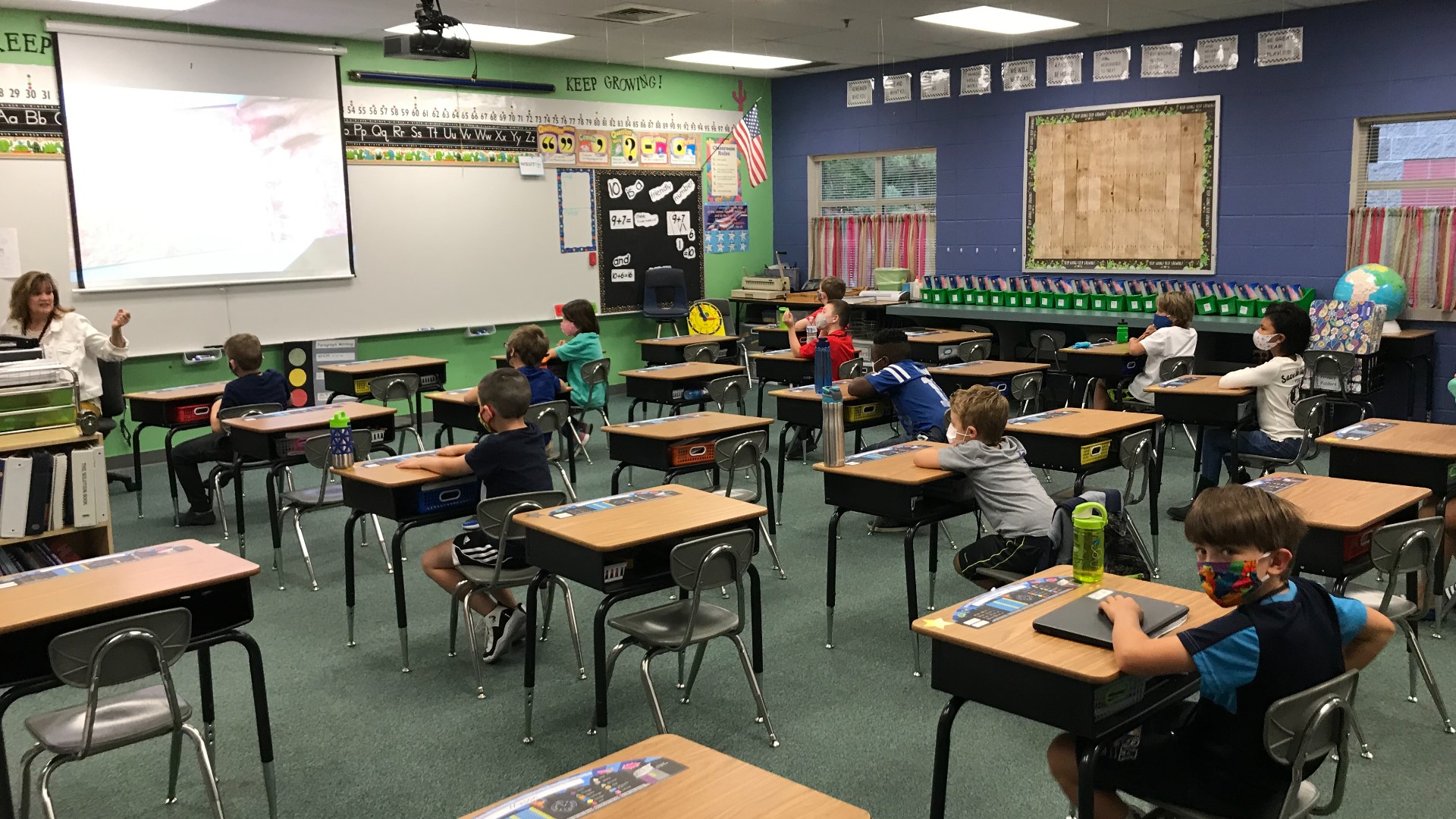BOISE, Idaho — The State Board of Education (SBOE) revised its back-to-school framework to reflect new recommendations based on new information.
“We want to make sure that guidelines that we had put out in July don’t hinder the good decision that is taking place and that we need to continue to take place,” SBOE President Debbie Critchfield said.
That idea lead the state board to revise the Idaho Back to School Framework colored categories. Those categories are meant as guidance for school districts on decisions in consultation with local health districts.
The goal behind the categories is to ensure schools operate as safely as possible during the pandemic.
These revisions come as more data and information becomes available eight months into the COVID-19 pandemic.
“We have seen that the infection rates in our schools are low, that it’s adults that are transmitting and contracting the virus at a higher rate. Our school districts are doing a very good job with their mitigation strategies,” Critchfield said. “I think the most significant change is the fact that we have expanded the red category to include other types of in-person delivery. It does not simply mean remote.”
Previously, placement in the red category meant community transmission of COVID-19 within a given district was high, so students would learn virtually full-time. For example, the West Ada School Board recently voted to continue a hybrid, alternating learning schedule while in the red category.
“We have learned that does not need to be the case. We can have in-person instruction happening within the red," Critchfield said. "We see it, we’ve got great examples of it and it’s functioning well. So, we wanted to update the guidance in red."
SBOE is aware of criticism surrounding in-person learning. Some have argued that schools in areas with high community spread should conduct classes remotely.
New information regarding virus transmission is a major factor in the revision of in-person learning plans.
“Does that mean that we don’t care about health and safety? No, but what it means is we are looking at how we manage that risk and, frankly, back in March we were not comfortable with a high level of risk," Critchfield said. "You saw schools closing down, there was a soft closure. We didn’t know and we were uncomfortable with that. But, as we’ve been in school and as we’ve been able to manage the circumstances, I think our comfort with risk, that level has risen."
Districts were previously placed into three categories but the amended plan adds a fourth category, the "orange" category, to the framework. Orange will take the place of the red category and signify high community transmission. Red will now signify critical levels of transmission.
The yellow category now signifies minimal to moderate community spread and the green category will signify no community spread.
Expanding the categories reflects a change already made by six of Idaho's seven health districts and provides flexibility to the state's school districts, according to SBOE.
"Health departments are working well with school districts to encourage their decision making and encourage them to have some maneuverability within the categories," Critchfield said. "This will help, we hope, to show that there is a lot of options out there. We want kids to be in school as much as is possible and hopefully, this will help support that."
Join 'The 208' conversation:
- Text us at (208) 321-5614
- E-mail us at the208@ktvb.com
- Join our The 208 Facebook group: https://www.facebook.com/groups/the208KTVB/
- Follow us on Twitter: @the208KTVB or tweet #the208 and #SoIdaho
- Follow us on Instagram: @the208KTVB
- Bookmark our landing page: /the-208
- And we also turn each episode into a podcast on Spotify or Podbeam
- Still reading this list? We're on YouTube, too:

